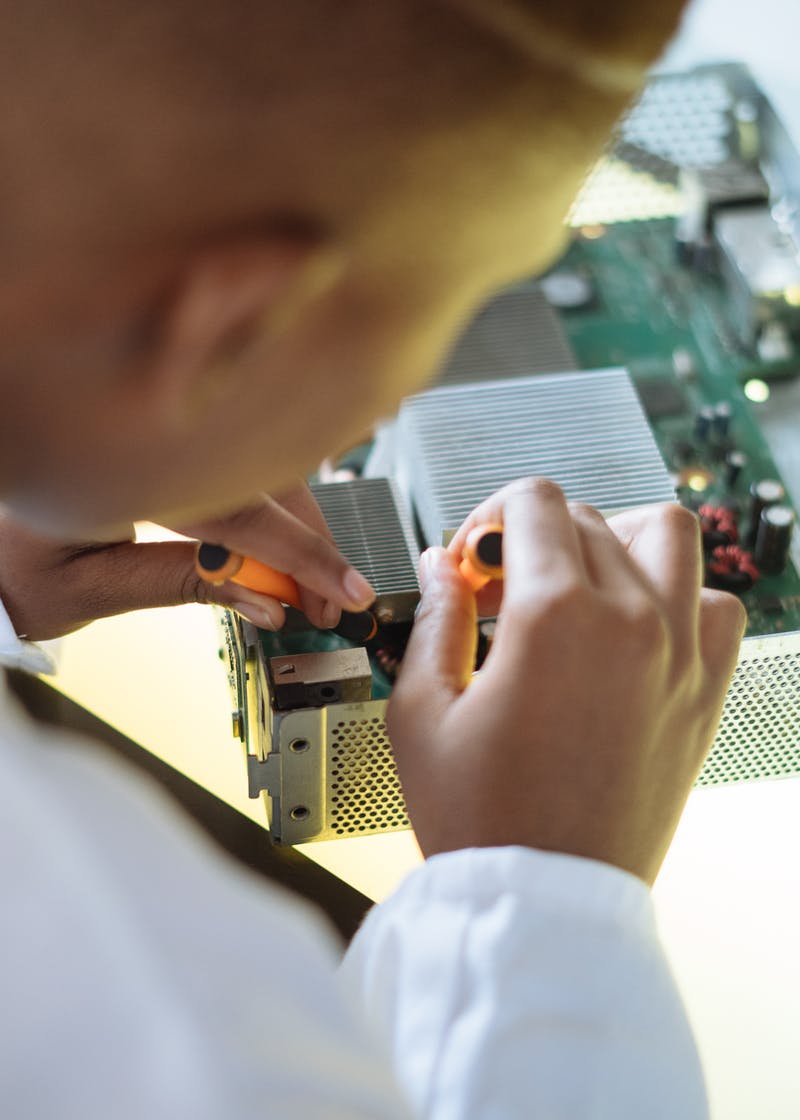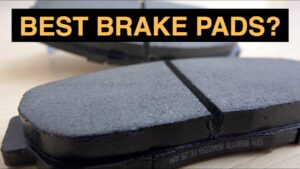Many things in the world require slight attention but can produce massive productive utilization and your vehicle is one of them. On average, Human Beings spend 26 minutes in a day commuting. Well, those predictions are only based upon the good-conditioned vehicle they’ve been commuting happily. But have you ever thought of getting bailed out by your vehicle or felt deserted in the busy hasty life ever?
So, to save yourself from the embarrassment, you ought to have a fair knowledge of how to treat your vehicle instead of rushing to the mechanic all the time or getting busted out on the middle of the road annoyingly. This article will help you out on how to prevent the coolant from leaking from the radiator cap easily.
Table of Contents
What Is A Radiator Cap?
Just like our Body and brain that stresses out due to excessive functionality or pressure your Car when used exquisitely makes the engine’s coolant hot and warm. Then it will be followed by expansion, the sudden rise of pressure inside the closed Coolant system in your Car.
Now, here comes the saviour “The Radiator Cap” to prevent coolant leaking from the radiator cap. The Radiator will control and prevents expansion and provides constant absolute pressure on the system.
Here, the cap pressure may vary from by multiple engine applications say anywhere from 13-16pst. The market does provide some High performances Caps in that very case the pressure may vary from 19-32 pst undoubtedly.
Working Of A Radiator Cap:
The radiator cap straight away blocks the air from entering the system by granting the necessary energy for the coolant to expand. The function of the upper seal is to block and protect the system 24/7. Let’s dive in to more details why does coolant leak from the radiator cap.
When the radiator engine of the car gets warm, the compression of the spring takes place, this is where the pressurized coolant drifts towards the overflow flow tank to avoid disaster.
How Do You Spot A Coolant Leakage?

5 standards will signal you about coolant leakage from the radiator cap.
1. Constant Leakage
Pop up your fender and look for any stains or spillage all across the engine thoroughly. The main motive could be a dent or subtle damage to the radiator. If you find any of these signs then the best way is to replace the Radiator cap.
2. The Reservoir Spillage
There has to be a Vent portion at the engine that can help the radiator cap from panicking and there comes the reservoir tank as a lution. The coolant is designed to flow towards the overflow tank to avoid chaos. Eventually, here the pressure will be released by the radiator cap. Just like a Venting out the caption.
If you have a bad radiator cap or damaged cap, the coolant flows more than anticipated and can cause the reservoir to overflow relentlessly. So, keep a constant eye on the coolant overflow tank and make sure everything’s functioning fine and perfect.
3. Hose Burst
The hose is a connector that joins the radiator, heater, fuel lines, vacuum lines, air conditioning, and power steering. The definite work of Hoses also includes acting on the vibration of the engine. The hoses might deceive your eyes. Inside and appearing fine on the outside so Be aware.

The damage or cut in the hoses is directly proportional to that of over or unbearable pressure which also results in spillage of the coolant. To a wide relief, the hose is generally built strong and standard that it might not always cause the spillage but in some given unfortunate conditions the pressure builds extensively and may cause enough energy to rip the hose in half.
Generally, minute, small damages/holes recover on their own when the engine shuts off. When you drive then the whole procedure revibrates again. The whole circle starts to reconcile again later resulting in big damage by over piercing the small hole into a big puncture. But scenarios like these there is a very minute of a chance for the Hose to result in a burst as we learned that the hose will patches itself up after the car goes to rest.
This is the moment where you can see the oil stains or coolant stains precisely when you drop down from your car in the parking lot. You better check on your overflew engine whenever you spot yourself in these types of situations. Cause this is the actual basic problem that needs to be corrected. Consulting a Mechanic is a fair option to eradicate any further spillages.
4. Overheat – The Classic Enemy
Leakage in the coolant or invading air constantly in the cooling system can/may lead to a critical overheated engine in your Car. If you notice your engine starting to steam from getting too hot, Follow the necessary precautions before checking up on your Engine better to turn the engine off before commencing any actions. Make sure you allow the engine enough time to cool on its own. Because instant action may lead to physical damage to the perpetrator due to the overheat of the engine.

unlikely, if you found any spillage of coolant liquid around the premises there is damage to the pressure cap for sure. Replace immediately if required. Consult near the garage and ask for help if required.
5. Long White Stripes On The Radiator
Fue to the overheating as we discussed before the Hose might get burst somewhere in the body and will spill the fluid all over the Engine without any hesitation further. In unavoidable circumstances like when coolant leaks out of the radiant tank and gets vapouredd due to the external amount of heat, it often leaves white streaks behind after the issue gets into control. You may give a blind eye at the coolant leaking from under the radiator cap unintentionally, so look out for these white streaks. They may tell you the cap is leaking under pressure or some unavoidable circumstances.
How To Fix The Coolant Leakaging From Radiator Cap?
For every problem, there’s a definite solution that can be done to eradicate or prevent yourself from imminent disasters.
Now, let’s find out the ways to solve the coolant leaking from radiator cap step-by-step.
Only one solution, Open up the fender and find the culprit that is the spillage and the hole. But it is not that easy as it is supposed to be. Here are some of the most common ways causes of a coolant leak and how to fix them.
1. The New Radiator Cap:
The damaged one can not hold pressure or the tension neither boiling the below point. This might be the primary cause of the coolant leakage in the radiator cap. It would also allow the coolant to leak externally causing spillage all over the place.
Fortunately, this is a quick and cheap fix that takes less money and money power. Have some patience, try to digest the pressure on its own simultaneously, and then you can refill the cooling system.
The Best way is to install a new radiator cap for further purposes.
2. Self Service
Pressure tester will help you to evade the possible disastrous events so If you have a radiator pressure tester, then you can inspect the system on your own without any second thought or hesitation. This is a perfect set of clues that helps you to find the or disoriented condition of the Radiator cap. The best prominent way is to buy or preferably rent the tester and slid it inside your toolbox for the future good.

Procedure & Precautions
This is a step by step efficient process that will help you avoid the trouble of coolant leaking from the radiator cap.
- To begin, pop open the hood in front of your car and find the radiator. Now use the Buton mechanism first and then turning it counter-clockwise will help you to open them easily without much attention.
- Now grab the cap adapter & bolt it onto the pressure tester’s side to open up. If you don’t know what the cap adapter looks like, There’s always a label that indicated what is what for the fine consolation of the Customers or Simply Google it.
- Tighten up the screws perfectly by the correct alignment i.e. cap adapter on top of the radiator filler neck.
- Remember, this is the crucial past where the tester needs to be sealed upon the radiator. If it is not, you may not be using the correct adapter for your specific radiator so take suggestions before buying or renting one to avoid the mechanical conflict during the self preventive actions.
- Usage of the pump handle will assist you to pressurize the tester until you gain the required pressure that can be made sure by noticing the indicator. If the pressure begins to descend simultaneously even when you’re pretty much sure that you have a good tight seal against the radiator filler the first place, you affirmatively leak into the cooling system. Find a mechanic and get the work done immediately.
- After accomplishing the total required process, release the radiator cap adapter subtly so the coolant doesn’t spill over the place. Make sure you sanitize the whole area that got spilled by the coolant to avoid the White stripes as mentioned above.
Frequnetly Asked Questions:

So, here are some of the frequently asked questions about why is coolant leaking from my radiator cap , what causes too much pressure in radiator etc?-
Why Is Coolant Leaking From My Radiator Cap?
What Causes Too Much Pressure In Radiators?
Can A Loose Coolant Cap Cause A Leak?
How Much Does it Cost To Replace A Radiator Cap?
What Happens If Radiator Cap Does Not Hold Pressure?
How Do I Reduce The Pressure In My Radiator?
Conclusion:
I hope you have received enough information about the coolant leakage from the radiator cap and the necessary preventive measure that can help you to solve the issue on your own.
We have covered everything relevant and productive in terms of evading the possible disastrous events that might cause trouble during your precious time.
Drive Safe there is always someone waiting for you on the other side.
Obey traffic rules and stay safe.
Thank You.
![You are currently viewing Coolant Leaking From Radiator Cap? [Quick & Easy Fixes]](https://hydraulicsuspension.com/wp-content/uploads/2021/05/pexels-photo-6720532.jpeg)


